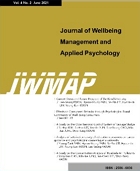 E-ISSN : 2586-6036
E-ISSN : 2586-6036
Ju-Yeon LEE
Woo-Taeg KWON
Abstract
Purpose: The small-scale environmental impact assessment system in Korea was introduced and implemented in August 2000, but it has a problem that it cannot guarantee implementation due to the large proportion of qualitative reduction measures for each evaluation item. Therefore, when preparing a small-scale environmental impact assessment, research was conducted on how to improve the existing simple listing-type reduction measures and qualitative evaluation standards to quantitative reduction measures and evaluation standards reflecting regional characteristics. Research design, data and methodology: The small-scale environmental impact assessment system in Korea was introduced and implemented in August 2000, but it has a problem that it cannot guarantee implementation due to the large proportion of qualitative reduction measures for each evaluation item. Therefore, when preparing a small-scale environmental impact assessment, research was conducted on how to improve the existing simple listing-type reduction measures and qualitative evaluation standards to quantitative reduction measures and evaluation standards reflecting regional characteristics. Results: As a result of the analysis of qualitative and quantitative factors, the arithmetic sum of the qualitative factors of the total six projects is 160, accounting for 80% of the total number of reduction measures, and the quantitative factors are 40, accounting for 20%. Among them, the number of qualitative reduction measures reached 97.4% for animal and plant items, and more than 90% for air quality, noise and vibration, and eco-friendly resource circulation items. Conclusions: Therefore, it is necessary to avoid establishing qualitative reduction measures and set quantitative measures as the basis, but to specify the specifications, size, and installation location related to the reduction measures, and to calculate the numerical reduction efficiency.
- keywords
- Small-scale environmental impact assessment, Qualitative reduction measures, Quantitative reduction measures
- Downloaded
- Viewed
- 0KCI Citations
- 0WOS Citations













